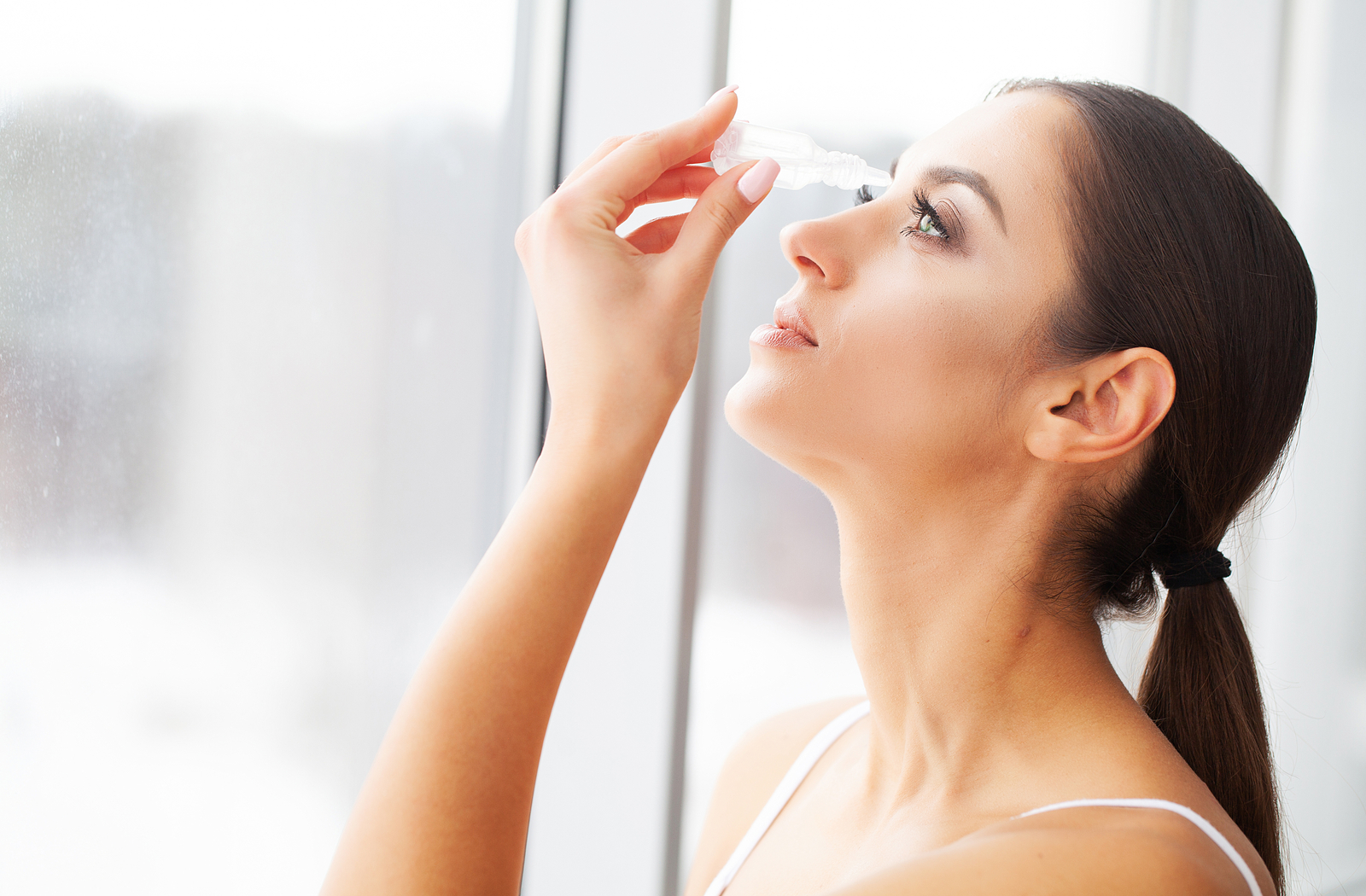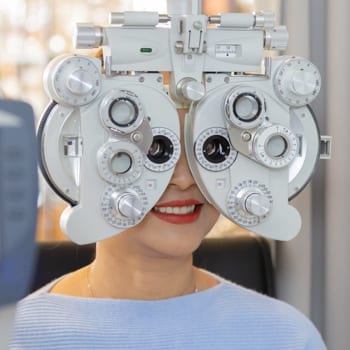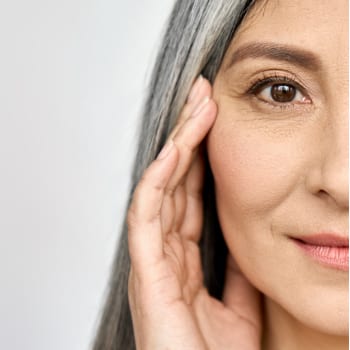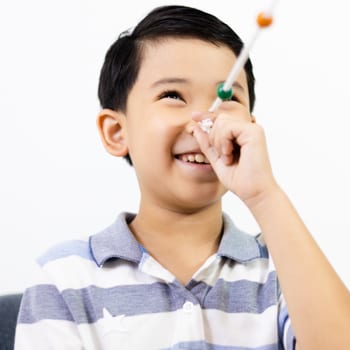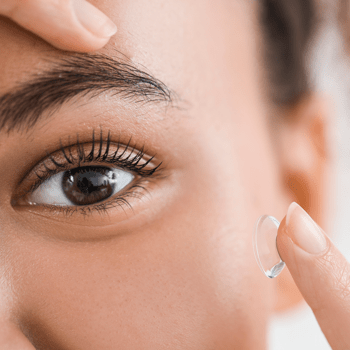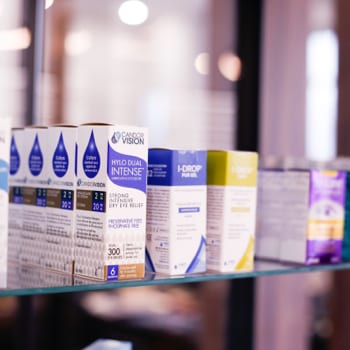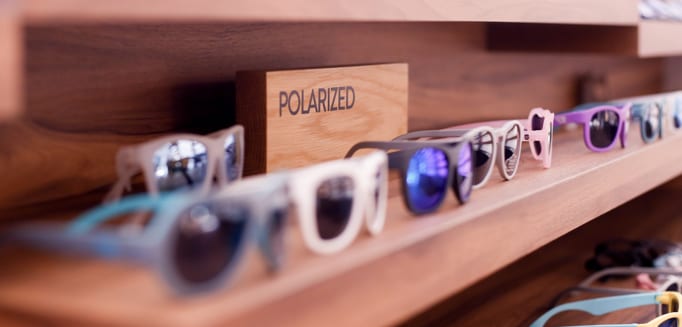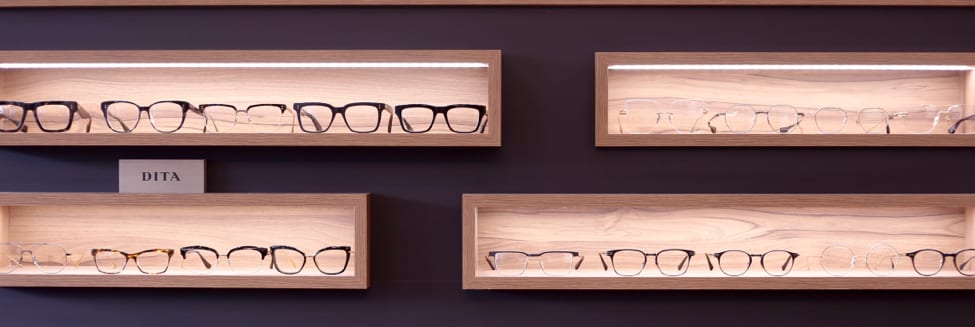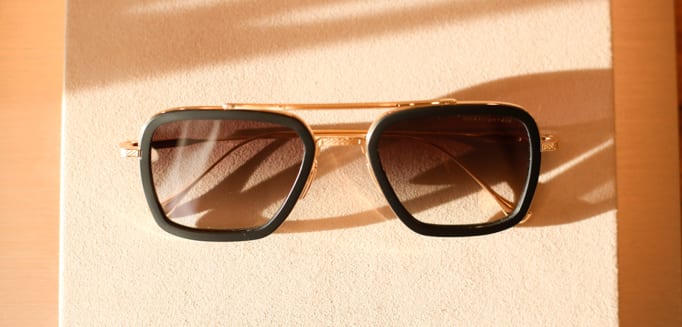Are you feeling the sting of dry eye? You’re not alone.
Around 6 million adult Canadians struggle with dry eye, making it one of the most common eye issues people can experience across the country. One of its leading causes is meibomian gland dysfunction, which blocks the glands responsible for producing the oil content in your tears, paving the way towards evaporative dry eye symptoms.
Eye drops, gels, and ointments are often the first treatment people turn to when they’re having trouble managing their eye comfort, but what do these products actually do? How often do you need them? And which products are the most effective for your particular dry eye symptoms?
Today, we’re going to break down the different products available for managing your dry eye symptoms, their differences, and what we may recommend when you book a dry eye therapy appointment at Foresee Eye Care.
Let’s dive in!
Drops, Gels, & Ointments: What’s The Difference?
There are 3 different types of dry eye products you may have to consider when you’re looking for dry eye relief: Drops, gels, and ointments.
The overall purpose of these medications is to hydrate your eyes and stabilize your tear film, but each has unique properties that address certain dry eye issues. You can think of each as a stepping stone towards more severe dry eye treatment.
Eye Drops
Eye drops are often the first solution you look for if you’re struggling with eye irritation.
Eye drops can help alleviate dry eye, but certain types can also help treat conjunctivitis caused by viruses, bacteria, and allergies. Depending on your symptoms and their severity, we may recommend non-prescription or prescription eye drops. Drops can also come with or without preservatives.
Gels
Gels are likely the next step you’ll take for managing more moderate dry eye symptoms.
The thicker consistency helps the gel stay on your eye surface for longer and can help alleviate corneal discomfort caused by dry eye. However, gels may cause blurry vision for a time while it dissolves.
Ointments
Finally, ointments may be a better choice for alleviating moderate to severe dry eye symptoms.
Ointments have the thickest consistency compared to the other products, but they can last the longest and treat more issues along with dry eye, like conjunctivitis, styes, infections, and more. As such, these products will need to be prescribed to you by an optometrist.
Like gels, ointments can also cause blurry vision while it dissolves on your eye surface.
When Should You Use a Drop, Gel, or Ointment?
Because eye drops, gels, and ointments have different characteristics, they should only be used when they’re the most appropriate for your symptoms. You may need to use your product multiple times a day, or at certain times of the day.
Everyone’s needs are different, so you should speak to our team to see how often you use your eye care product. However, there are some general guidelines you could follow:
- Eye drops can be used multiple times a day, depending on your symptoms. Some eye drop products can include preservatives to help discourage bacterial growth, but these could also affect your eye comfort if they’re used too frequently.
- Eye gels can provide comprehensive relief for a more extended period, but they may cause some blurriness right after you apply them. Some doctors may recommend using them once in the morning or right before bedtime.
- Eye ointments are specifically used for severe dry eye cases and can blur your vision the longest. We generally recommend using an ointment once before bedtime to help it soothe your eyes and treat your conditions while you sleep.

How To Use Your Product
So, what about using your product? While drops, gels, and ointments can all differ in characteristics, they follow similar application steps. If you pick up your product from our team, we’ll be happy to provide specific instructions depending on the issue you wish to address.
These steps include:
- Washing your hands
- Removing your contact lenses
- Sitting down in a comfortable position
- Pointing your eyes toward the ceiling
- Gently pulling your lower eyelid down to create pocket
- Applying a small drop of your product to the pocket
- Letting go of your eyelid
- Closing your eye gently and tilting your head forward
- Washing your hands again
If you’re using an eye gel or ointment, your eyes may feel greasy, and you may not be able to wear your contacts again until the product dissolves. If you have to apply another drop, wait about 10 minutes.
If you’re using multiple medications, make sure you use them in order. Once you open your medication, you’ll also need to know its expiry date.
Dry Eye Products We Offer
While there are some over-the-counter medications you can look for at your local pharmacy, having an eye exam can determine which medication may be best for you and your needs. In some cases and for the best results, we may recommend a prescription medication to help you achieve more comfortable vision.
For a closer look at the products we offer, be sure to check out our online store! Some of our most popular offers include, but are not limited to:
Thealoz Eye Drops
Thealoz preservative-free eye drops are a popular product for alleviating discomfort. These drops also include a compound known as Trehalose, which can protect your eyes from UV damage, soothe your eye surface, and stabilize the oils in your tear film.
HYLO Eye Drops
HYLO eye drops, another preservative-free option we offer, uses Sodium Hyaluronate to help keep the drops on your eyes for longer. Using a long-lasting eye drop can help hydrate your eyes and alleviate mild dry eye symptoms.
I-DROP PUR GEL
For moderate dry eye symptoms, we may recommend I-DROP PUR GEL, which uses a mixture of Hyaluronic Acid and glycerin to keep the gel on your eye surface for a long period of time. As you blink, gel droplets move across your eyes to help stabilize and hydrate your tear film.
OCUNOX Vitamin A Ointment
OCUNOX Vitamin A ointment may be a fantastic option if you’re struggling with more severe dry eye symptoms. This ointment is unique because it uses Vitamin A, which makes up the oil content in your tears, to help stabilize your tear film. The ointment’s consistency also helps your eyelid glide smoothly over your eye surface.
For Comprehensive Relief, Book an Appointment
While eye drops, gels, and ointments are a fantastic choice for a range of dry eye symptoms, they’re only the tip of the iceberg.
We offer several different dry eye treatments ranging from in-office procedures like MiBo Thermoflo, Intense Pulsed-Light (IPL) therapy, and Radio Frequency (RF) to dietary supplements like omega-3 fatty acids. The important factor is having a thorough dry eye examination and workup to find out what type of dry eye condition and which treatment and management option may be the right choice for you. Book a dry eye assessment and therapy appointment today.

